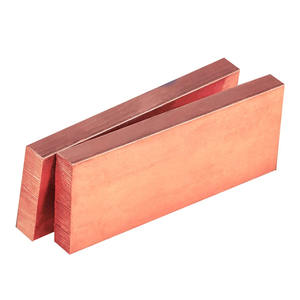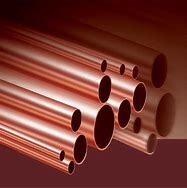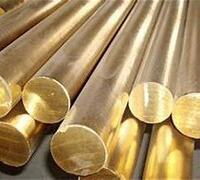1. Introduction
Copper is one of the most versatile metals in engineering, construction, and electronics—thanks to its unmatched conductivity, corrosion resistance, and malleability. But not all copper products are created equal. Whether you’re grounding a building, welding copper components, or installing an air conditioning system, choosing between a copper rod, copper strip, or copper pipe can make or break your project.

In this deep-dive analysis, we’ll compare and contrast key copper forms—focusing on copper rod (including earthing and welding variants), copper strip (flat, rolled, and alloyed), and copper pipe (especially for HVAC). We’ll also unpack pricing, material compositions like copper bonded steel, and practical tips for handling and installation.
2. Copper Rod: Types and Applications
2.1. Earthing and Grounding Rods
When it comes to safety and electrical grounding, the copper earth rod is a go-to solution. These include pure copper rods, copper bonded earthing rods, and copper clad steel ground rods. Pure copper rods offer the best corrosion resistance but come at a higher copper rod price. In contrast, copper bonded ground rods use a steel core with a thick electrolytic copper layer—balancing cost and performance.
Copper clad earth rods (also called copper clad steel earth rods) are similar but use a metallurgical bond. While slightly less conductive than solid copper, they’re far more affordable and still meet most electrical codes. If you’re shopping based on earthing rod price, copper bonded options often provide the best value for large-scale installations.
2.2. Welding and Brazing Rods
Not all copper rods are for grounding. Copper welding rod and copper brazing rod serve entirely different purposes. For joining copper to copper, professionals often use copper to copper brazing rods or copper to copper welding rods. These filler materials melt at lower temperatures than base copper, allowing strong, leak-proof joints without warping the workpiece.

Copper rod for welding is typically made from deoxidized copper or copper alloys like phosphor bronze. Unlike steel welding rods, welding rod copper doesn’t require flux in many cases—especially when using oxy-acetylene torches. However, for high-strength applications, beryllium copper or silicon bronze rods may be preferred over pure copper.
3. Copper Strip: Flat, Flexible, and Functional
3.1. From Earthing to Electronics
While rod copper is round and rigid, copper strip comes flat—making it ideal for busbars, grounding straps, and EMI shielding. Common forms include flat copper strip, thin copper strips, and flexible copper bus bar. The copper earth strip 25x3mm price, for example, is often quoted for substation grounding grids.
Nickel plated copper strip and beryllium copper strip offer enhanced durability and spring properties, useful in connectors and switches. Meanwhile, copper strip for earthing provides low-resistance paths in panels where space is tight. You’ll also find copper tape for snails in gardening—but that’s a niche use!
3.2. Scrap, Stripping, and Sourcing

For recyclers, stripping copper wire is a daily task. The best way to strip copper wire depends on volume: manual strippers for small jobs, rotary machines for bulk. Burning copper wire for scrap is illegal in many areas and damages the metal—so avoid it. Instead, use the fast way to strip copper wire with automated tools to preserve purity and maximize value.
If you’re sourcing materials, searching for ‘copper strip near me’ or ‘roll of copper strip’ can yield local suppliers. Prices vary by thickness—1mm copper strip costs less than heavy-duty 3mm versions. And yes, stripping wire for recycling is worth it when copper prices are high, especially with clean, bare copper.
4. Copper Pipe: HVAC, Plumbing, and Beyond
4.1. Sizing and Applications
Copper pipe tube is a staple in plumbing and HVAC. Common sizes include 15mm copper pipe (½ inch), 22mm copper tube (¾ inch), and larger 1 1/2 copper pipe for mains. Air conditioning copper pipe—often called aircon copper tube—is specially dehydrated and sealed to prevent moisture ingress in refrigerant lines.
When comparing ac copper pipe price vs. alternatives like PEX plumbing pipes, copper wins on durability and thermal performance but loses on upfront cost and installation time. Still, for air conditioner copper pipe price, many contractors consider it non-negotiable due to reliability.
4.2. Installation and Maintenance
Bending copper pipe requires care to avoid kinks—use spring benders or tube benders for clean curves. Copper pipe soldering is a core skill: clean the pipe, apply flux, heat evenly, and feed in solder until it wicks into the joint. Resoldering copper pipe without removal is possible with careful heat control and flux application.
Always use compatible copper pipe fittings—compression, solder, or push-fit like SharkBite. Mixing materials (e.g., PVC to copper) requires dielectric unions to prevent galvanic corrosion.
5. Conclusion
Choosing the right copper product isn’t just about conductivity—it’s about matching form to function. Need a durable ground electrode? Go for a copper bonded earthing rod. Joining copper components? Pick a copper to copper brazing rod. Building a busbar or grounding strap? Flat copper strip is your answer. And for refrigerant lines or plumbing? Aircon copper pipe remains the gold standard.
With fluctuating copper rod price and copper strip price, understanding these differences helps you optimize both performance and budget. Whether you’re an electrician, HVAC tech, or scrap recycler, knowing what each copper format offers ensures you’re always using the right tool for the job.
Our Website founded on October 17, 2012, is a high-tech enterprise committed to the research and development, production, processing, sales and technical services of ceramic relative materials such as What’s. Our products includes but not limited to Boron Carbide Ceramic Products, Boron Nitride Ceramic Products, Silicon Carbide Ceramic Products, Silicon Nitride Ceramic Products, Zirconium Dioxide Ceramic Products, etc. If you are interested, please feel free to contact us.

